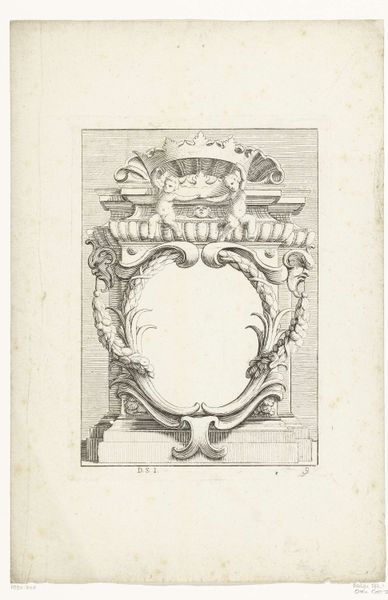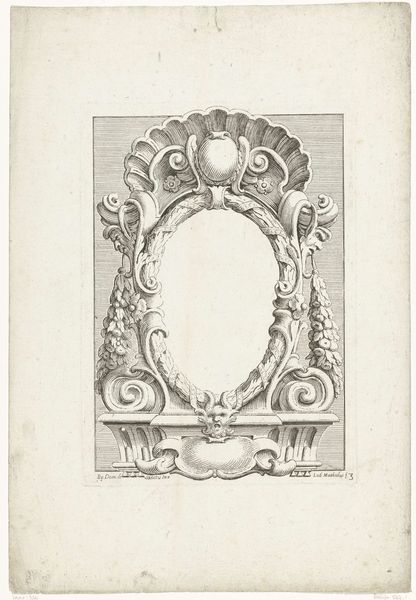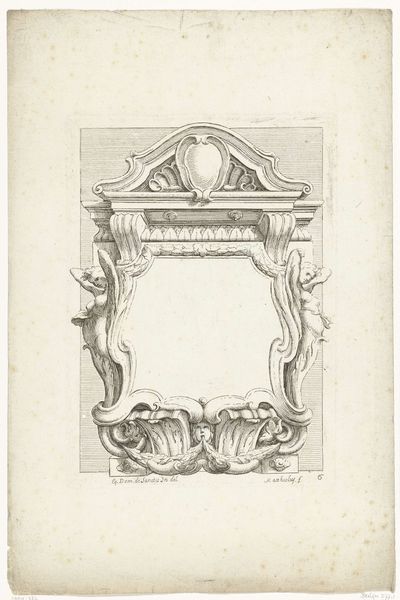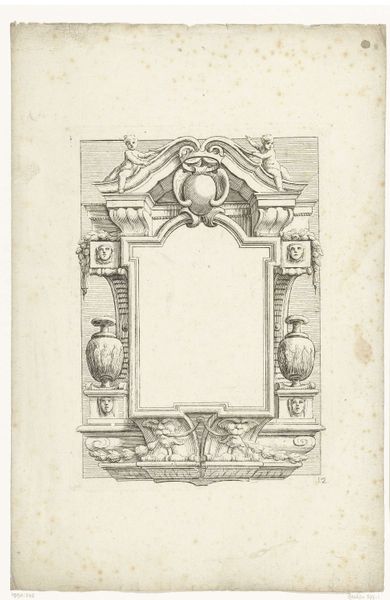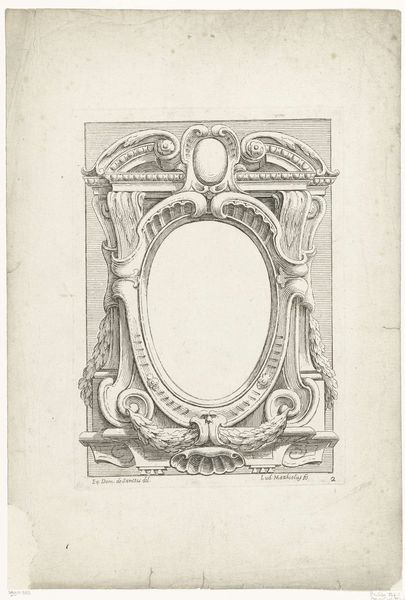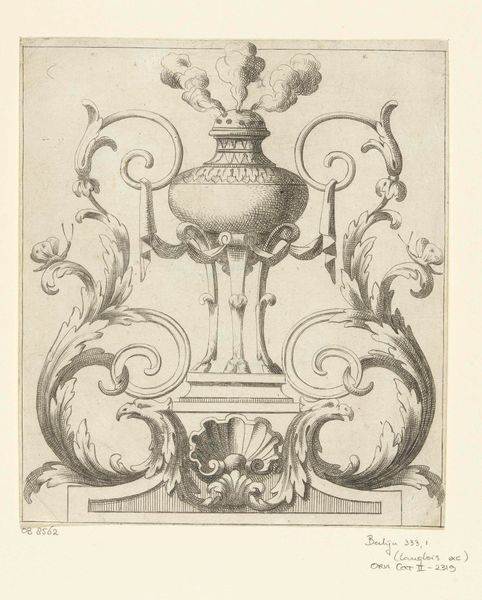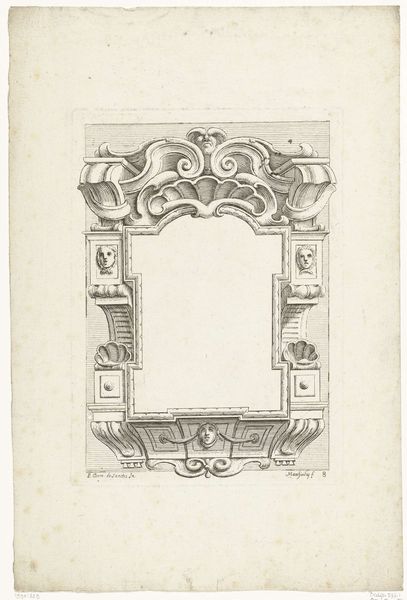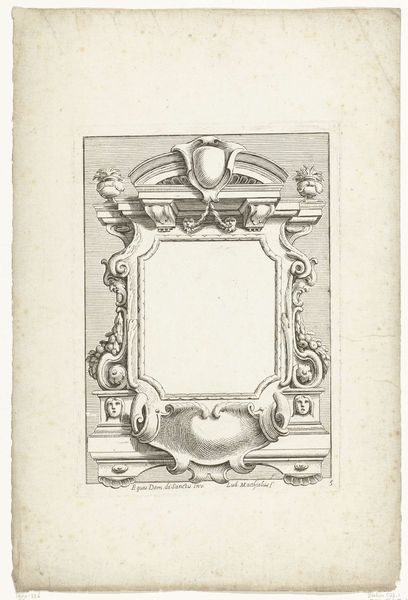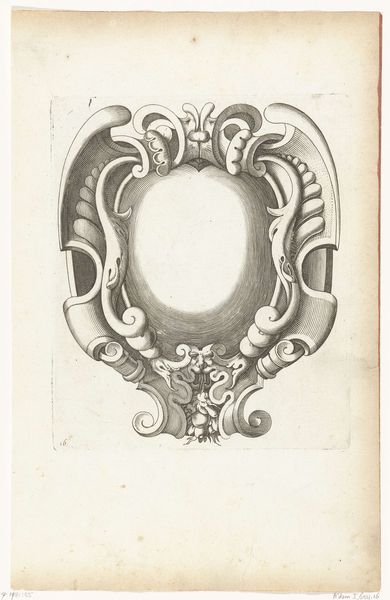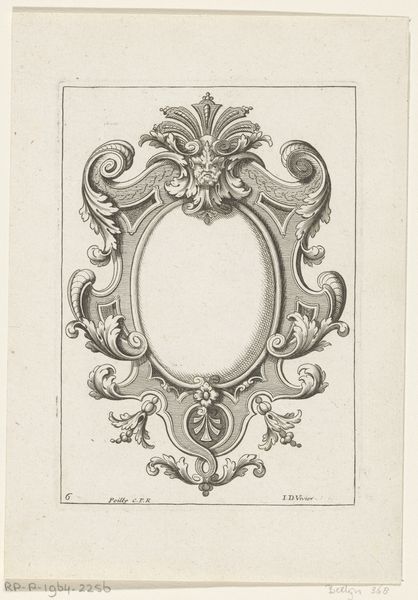
ornament, print, engraving
#
ornament
#
baroque
# print
#
old engraving style
#
geometric
#
line
#
decorative-art
#
engraving
Dimensions: height 241 mm, width 173 mm
Copyright: Rijks Museum: Open Domain
Lodovico Mattioli etched this tablet cartouche in the 17th or 18th century, a period that reveled in the symbolic weight of ornamentation. Consider the Bacchic masks intertwined with grapevines, symbols of Dionysus, the god of wine and ecstasy. This evokes a sense of liberation and primal energy. Look closer and you will notice the skulls near the base, memento mori, which serve as stark reminders of mortality. The skull, once a potent symbol of death and decay, transcends its morbid origins. It appears as a vanitas motif in Dutch Golden Age paintings, cautioning against earthly vanity. Yet, it is also embraced in Mexican Día de los Muertos celebrations, evolving into a symbol of remembrance and celebration of life. Such contrasting symbols create a visual tension, engaging the viewer on a deep, subconscious level. These symbols have been continually reinterpreted, and their emotional power resurfaces, shaped by our ever-evolving cultural landscape.
Comments
No comments
Be the first to comment and join the conversation on the ultimate creative platform.
